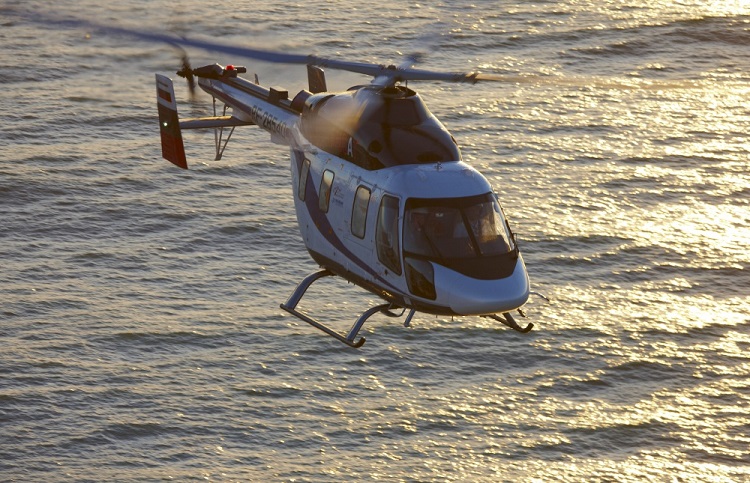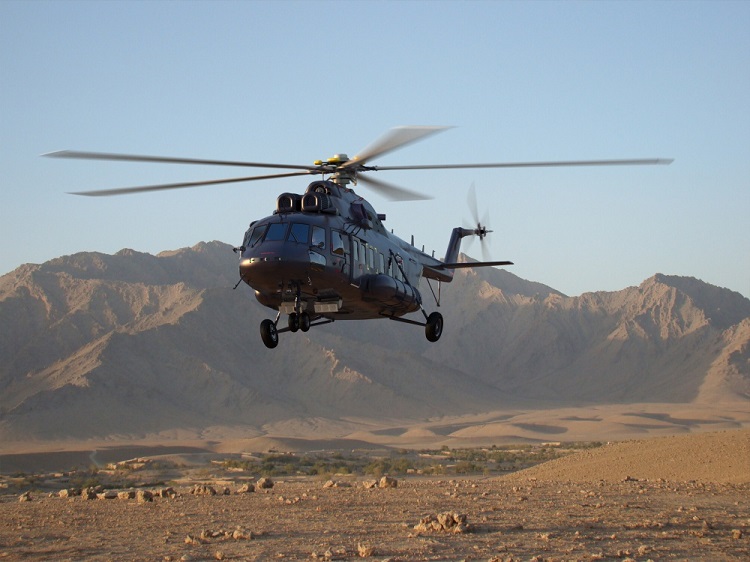Specialists at Kazan Helicopters have completed testing of an Ansat light helicopter equipped with a ditching system or emergency flotation system (EFS). The Ansat’s ditching system is designed to save passengers and crewmembers in case of an emergency water landing. The system is now in the certification phase, after which the Federal Air Transport Agency (FAA) will approve the major modification.
With the ditching system, if an Ansat were to make an emergency water landing, multiple inflatable buoyancy chambers or “ballonets” would keep the helicopter afloat for up to 30 minutes. During that time, passengers and crewmembers would deploy two life rafts and a radio beacon that accompany the ditching system and await search and rescue responders. The system also includes an emergency life support package.
“We are continuing our work to improve the air safety of Ansat, as it is actively used in the transportation of passengers and patients who require emergency medical assistance. Additionally, helicopters equipped with a ditching system will be able to conduct flights to oil companies’ facilities located at a considerable distance from the coast and participate in search and rescue operations above the water,” says Russian Helicopters CEO Andrey Boginsky. “Together with high performance, this will make Ansat even more attractive to fuel and energy companies and rescue services.”
The Ansat multipurpose twin-engine helicopter is manufactured by Kazan, Russia-based Kazan Helicopters which is a subsidiary of Moscow-based Russian Helicopters – part of Russia’s state-owned Rostec holding conglomerate. It utilizes a classic single-rotor design with a four-blade main rotor and a two-blade tail rotor.

The Ansat is a workhorse helicopter and certified for use in temperatures ranging between -45 to 50 degrees Celsius. It has the largest cabin in its class and is specially designed for reconfigurability between passenger and cargo transportation setups. In its passenger configuration, the Ansat can carry up to seven people.
Kazan Helicopters Ansat and Mil Mi-171A2 travel to Zhuhai for Airshow China
Both Kazan Helicopters Ansat and Russian Helicopters larger Mil Mi-171A2, produced by the Moscow-based Mil Moscow Helicopter Plant, are fixtures during this year’s China International Aviation & Aerospace Exhibition or “Airshow China” in Zhuhai, China.
The Mi-171A2 is the latest modification of the Mil Mi-8/17 helicopter and is equipped with Klimov VK-2500PS-03 turboshaft engines with a digital control system, as well as a more efficient X-shaped tail rotor and a new main rotor with composite blades and an enhanced aerodynamic profile.

The two Russian Helicopter models will perform each day of the six-day Airshow China event, from November 6 through 11. Airshow China is the county’s largest biennial airshow and will draw 770 exhibitors from 43 countries this year. Attendance is regularly recorded in the hundreds of thousands.
“China is one of the key operators of helicopters not only in Asia, but worldwide. Today, there are more than 400 Russian helicopters registered in the country, but this market is continuing to expand rapidly, it needs modern civilian aircraft, and we are prepared to offer these,” says Boginsky. “At Airshow China 2018, we will be presenting the Mi-171A2 and Ansat – models which have received particular interest from our Chinese partners. We have already begun the process of certifying these helicopters in China, the process will shortly be completed for Ansat, and for Mi-171A2 it will be completed by mid-2019.”
After the event, the Ansat and Mi-171A2 will set off on a demo tour of countries in Southeast Asia. The nearly 5,000-kilometer route will pass through Hanoi, Vietnam; Phnom Penh, Cambodia; Bangkok, Thailand; and Kuala Lumpur, Malaysia.
